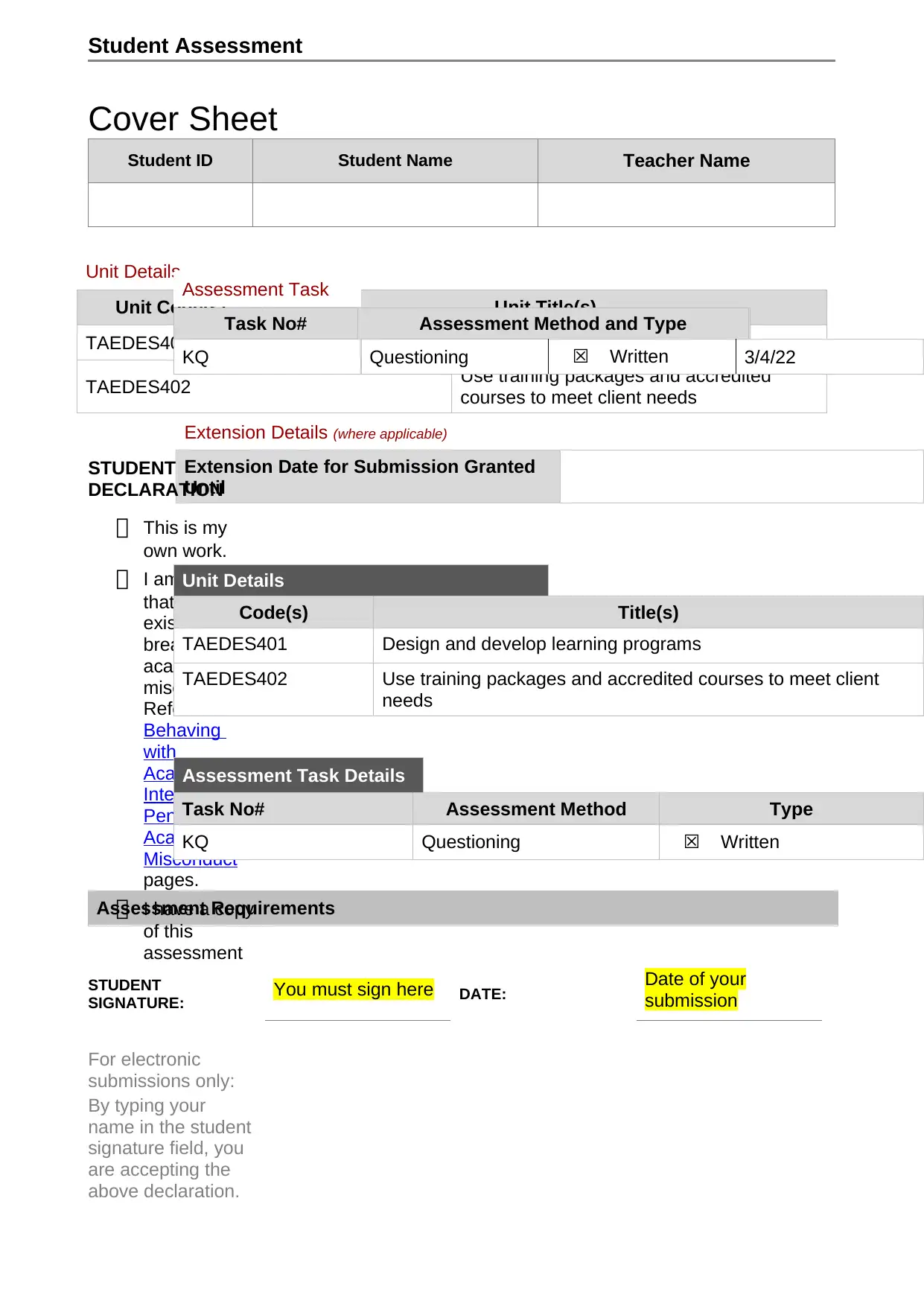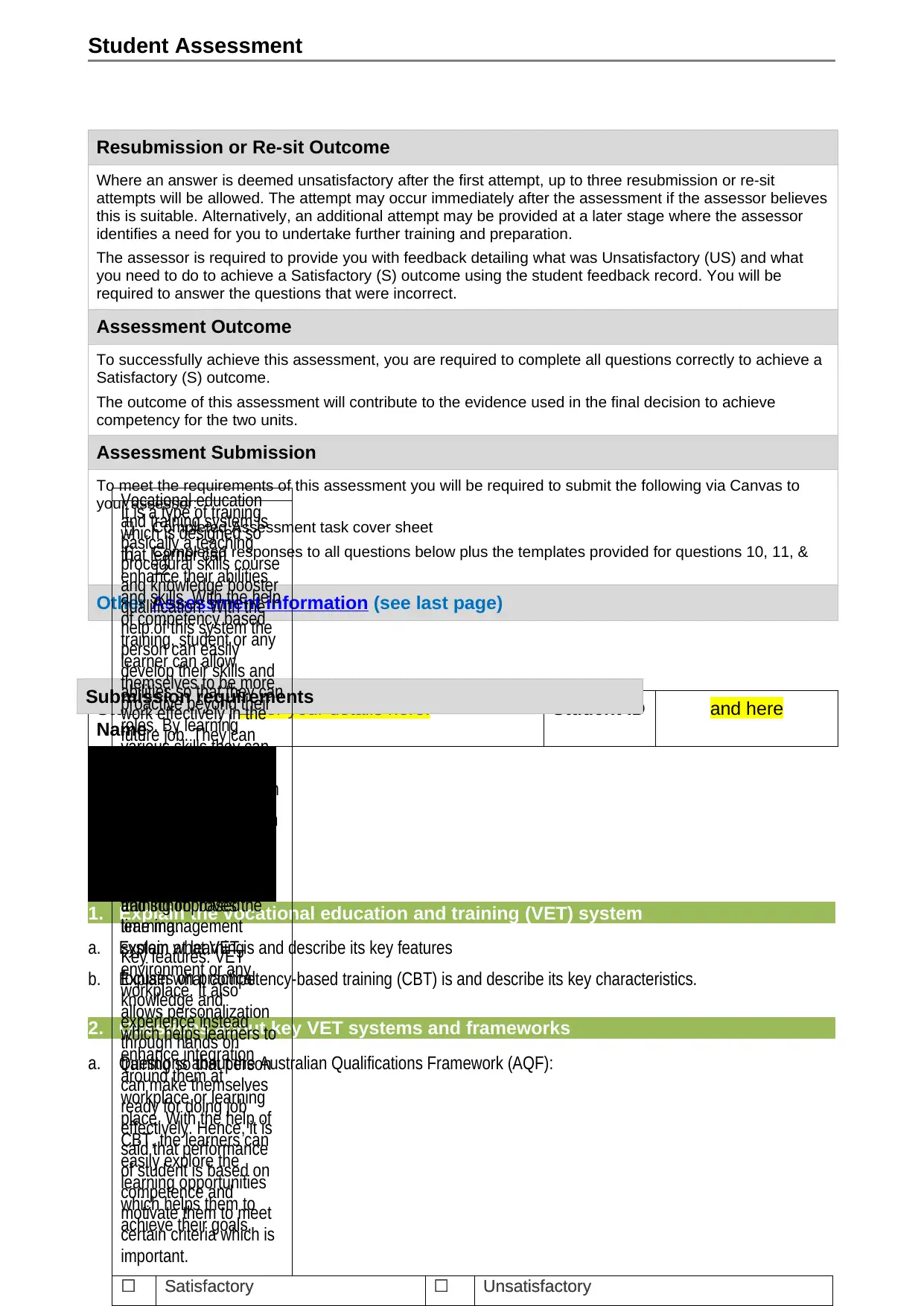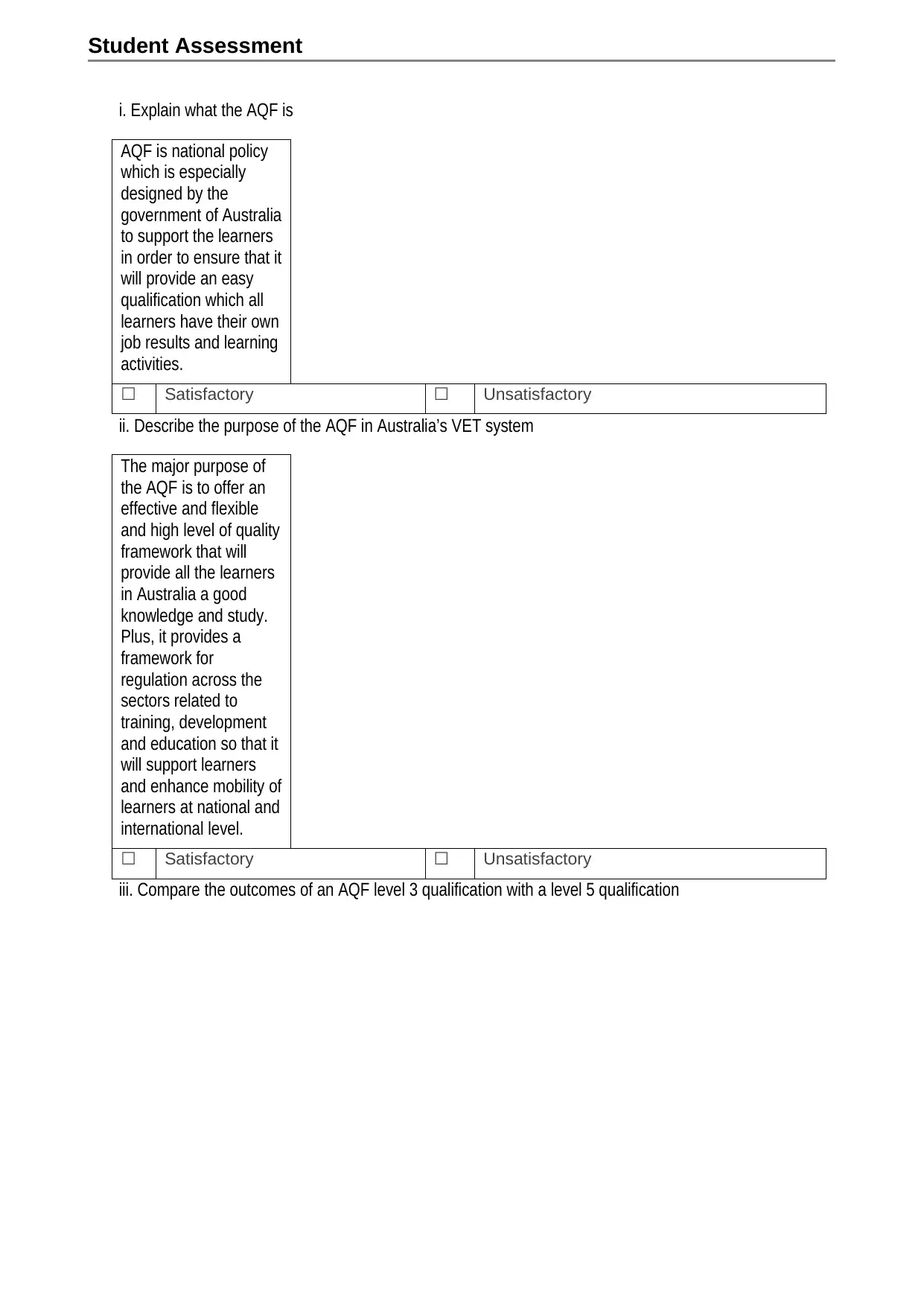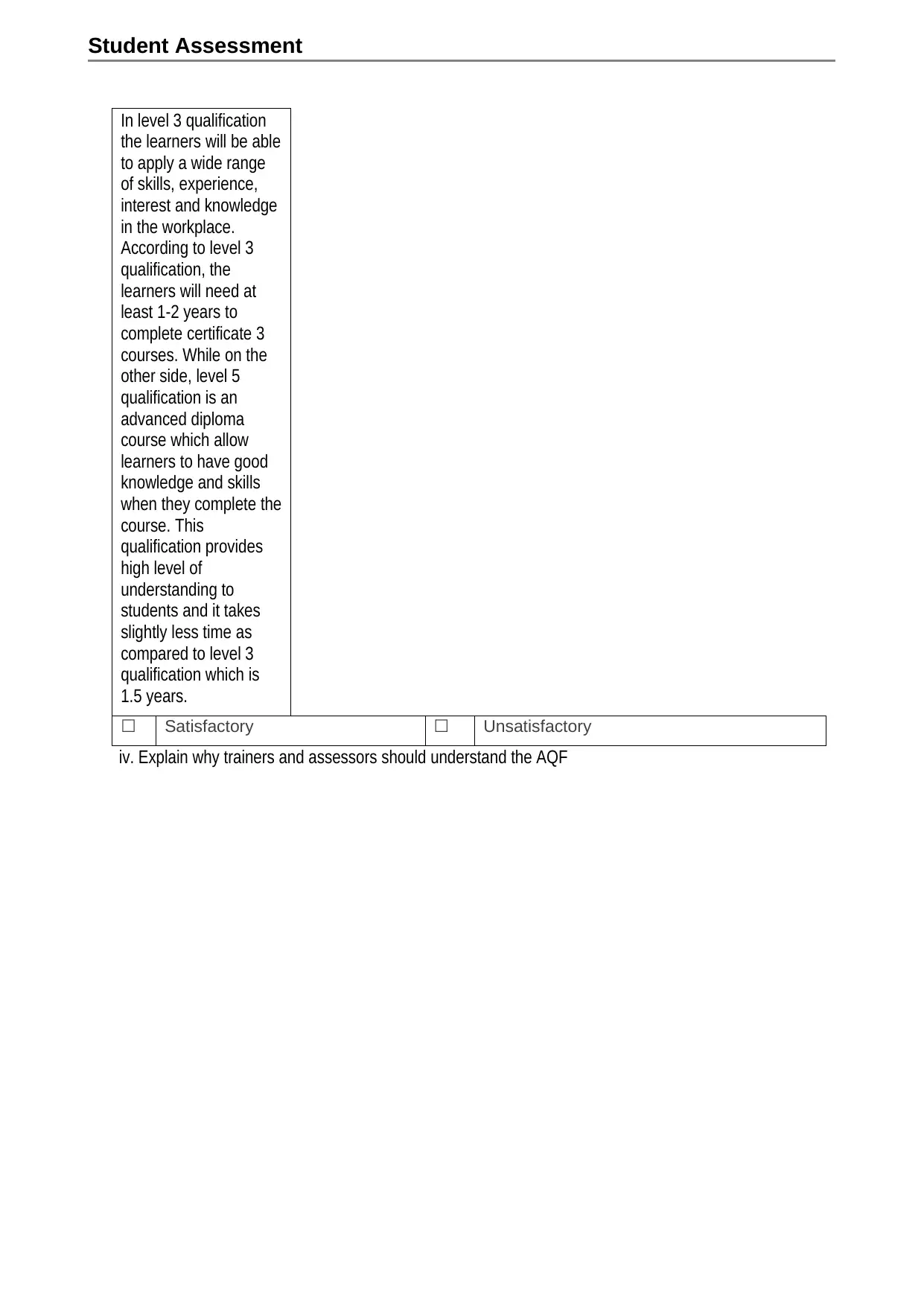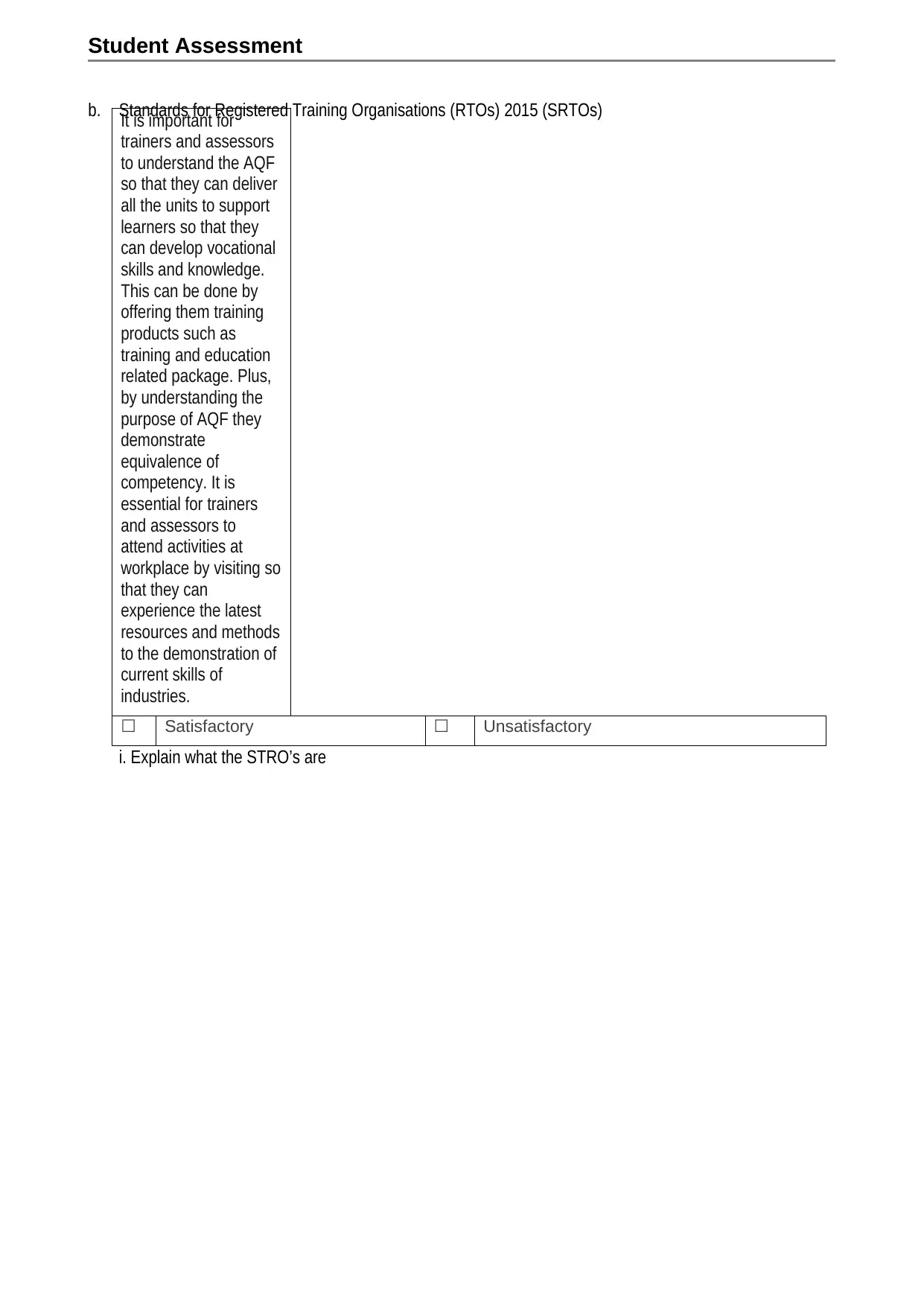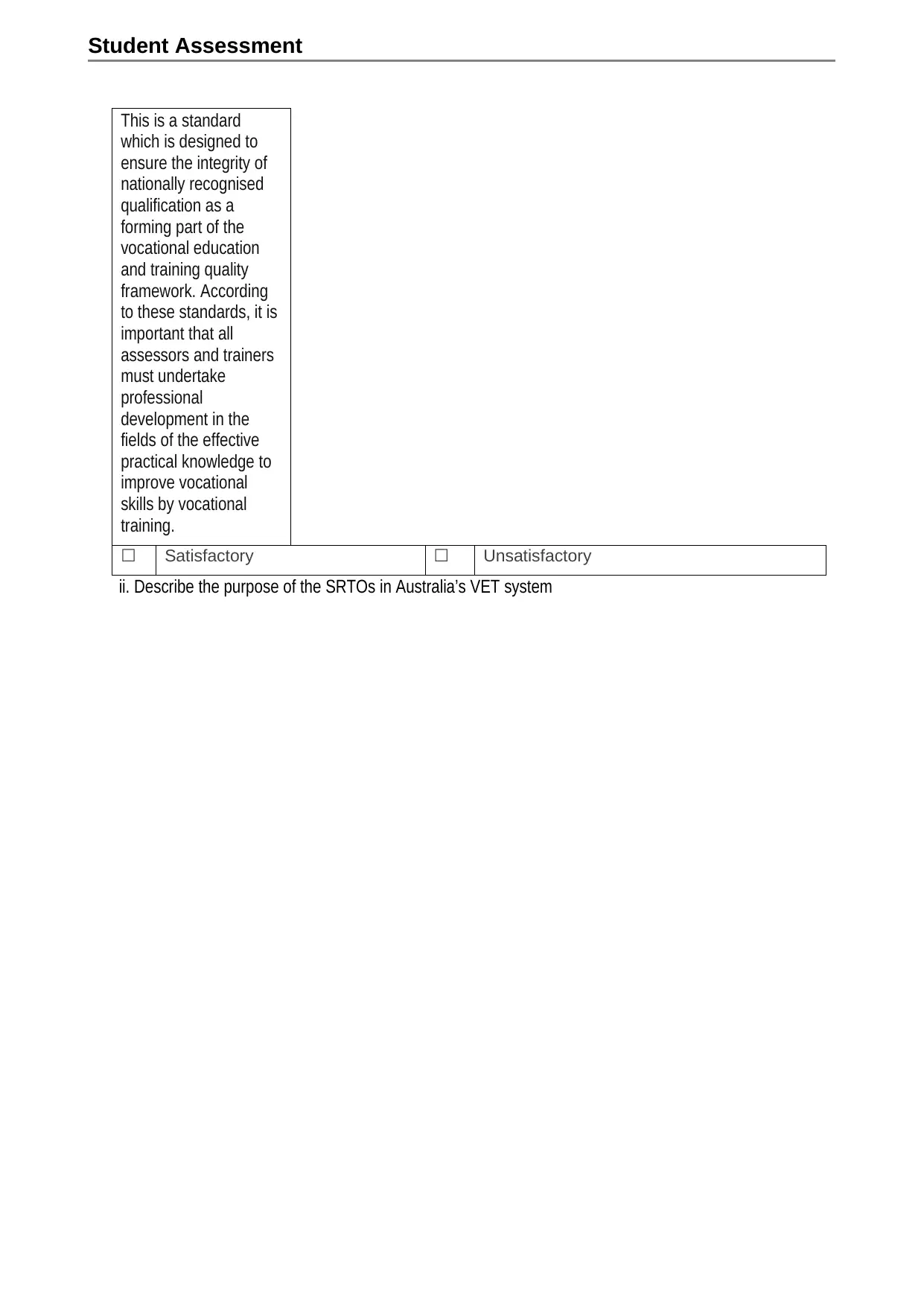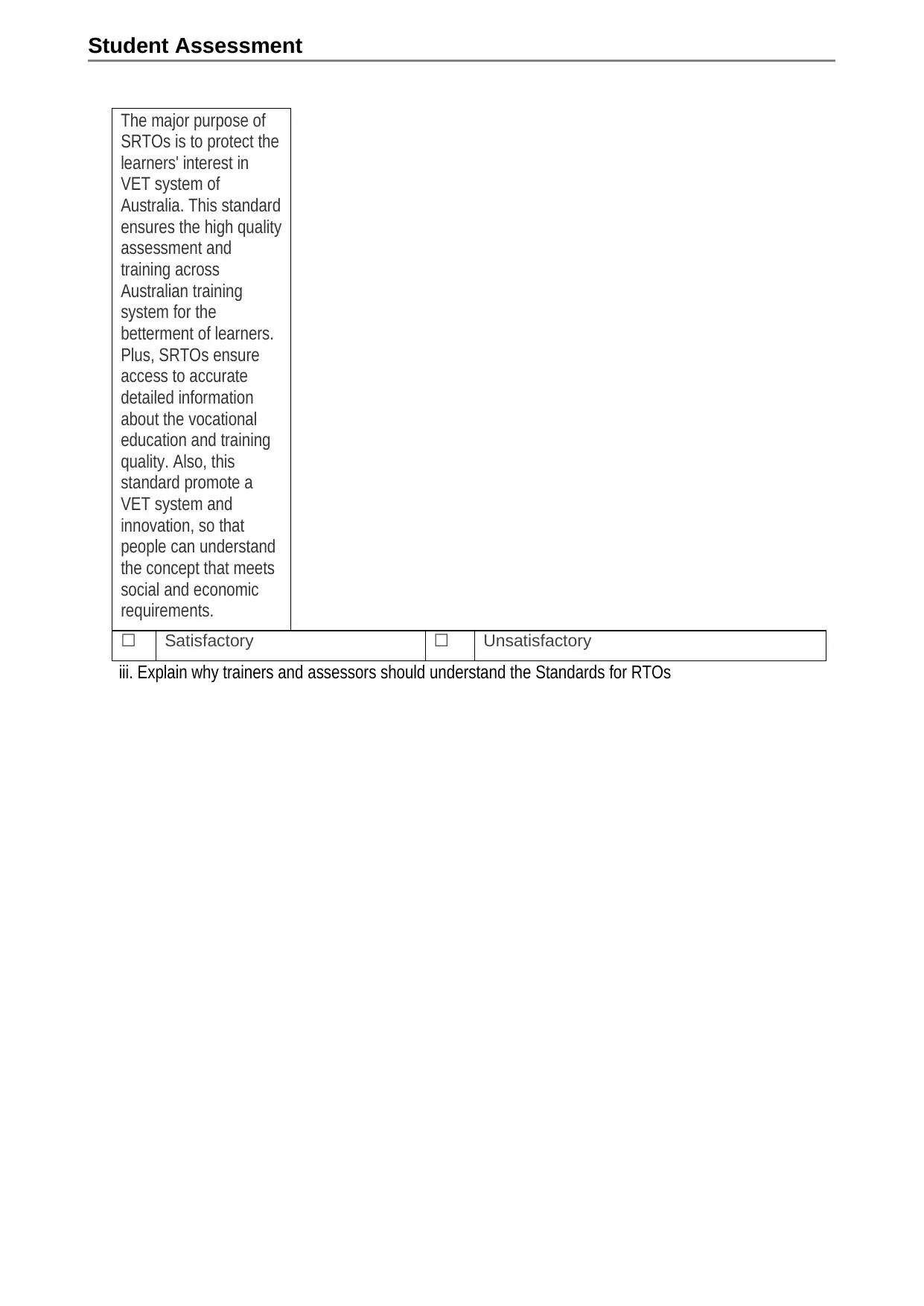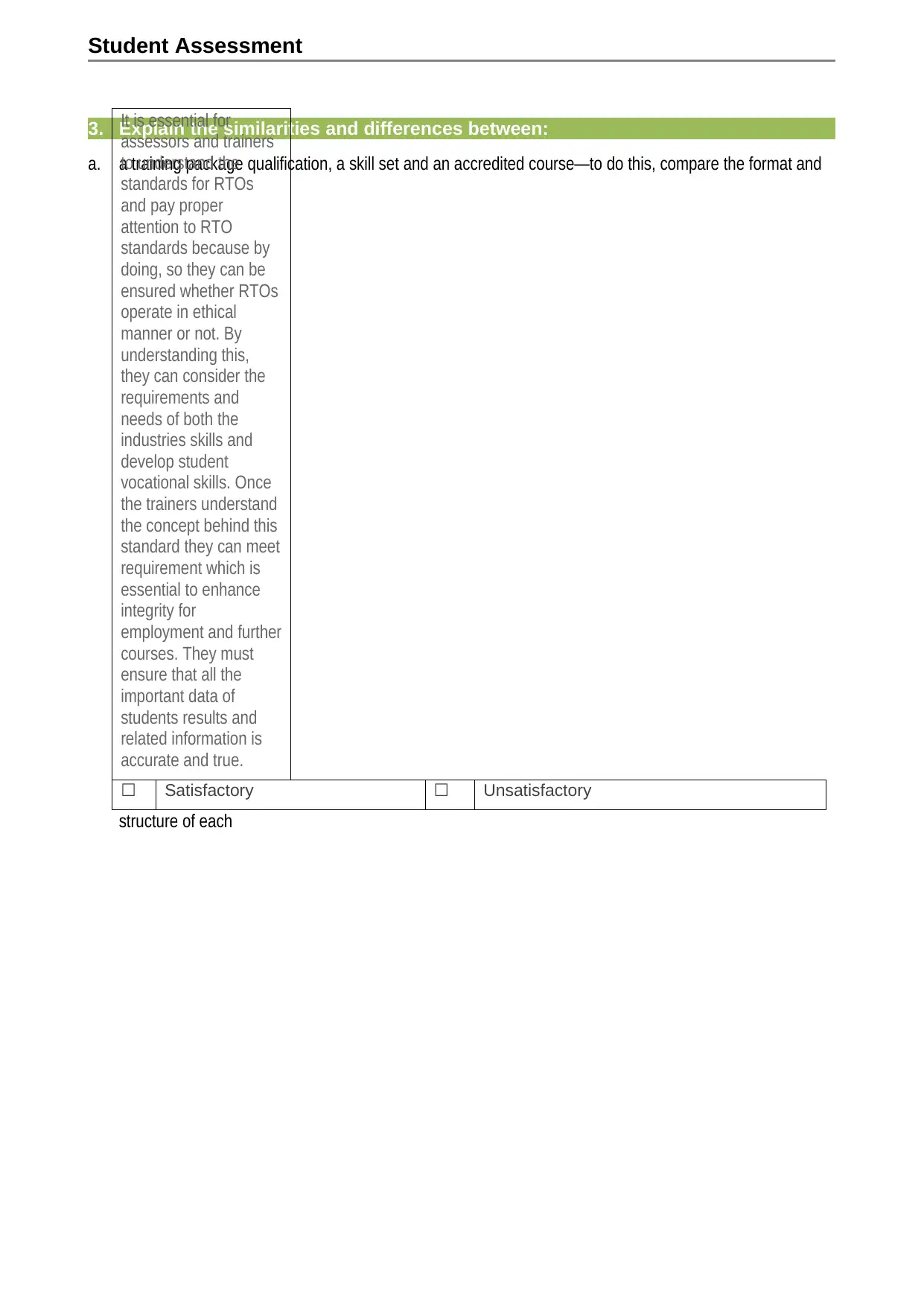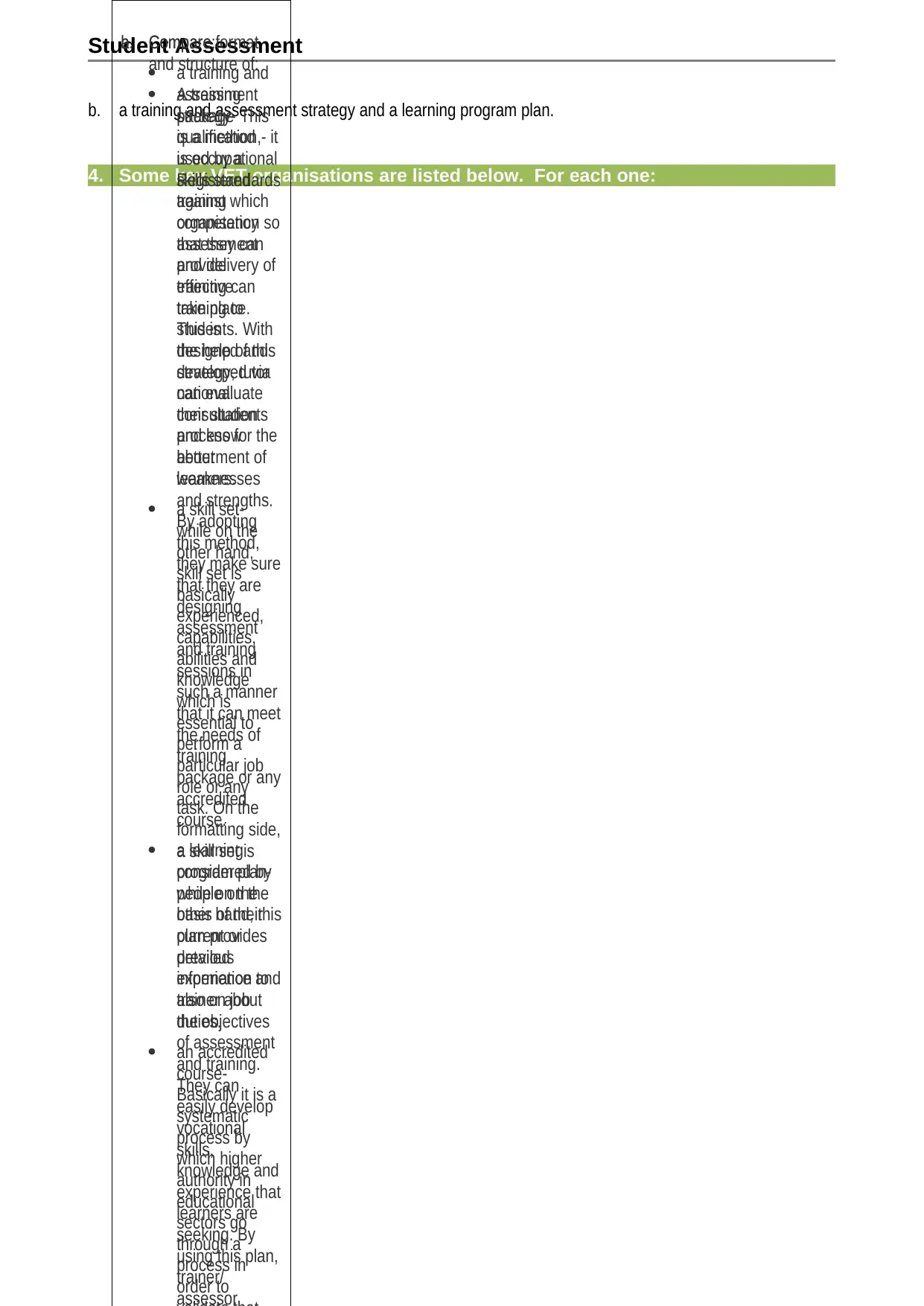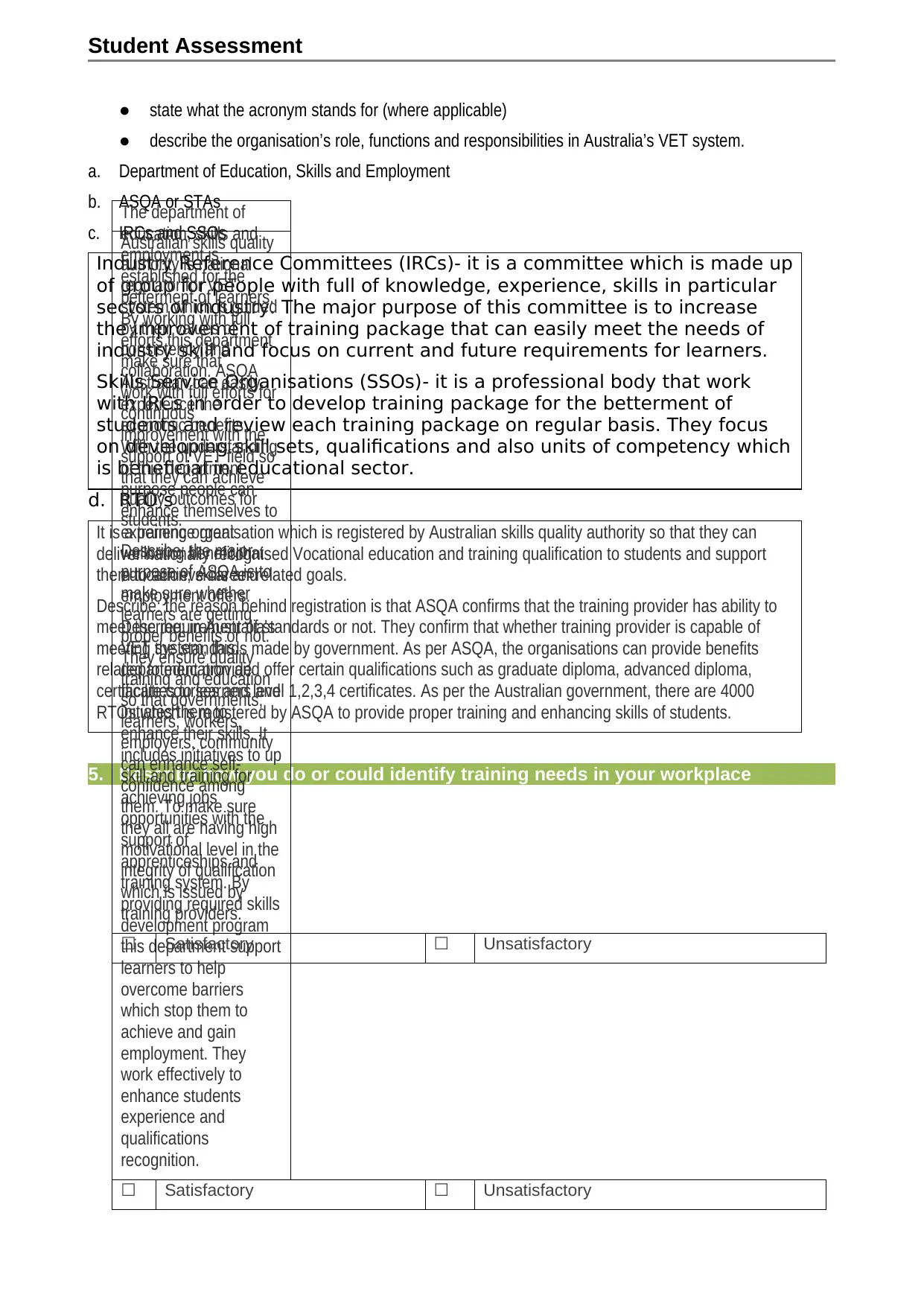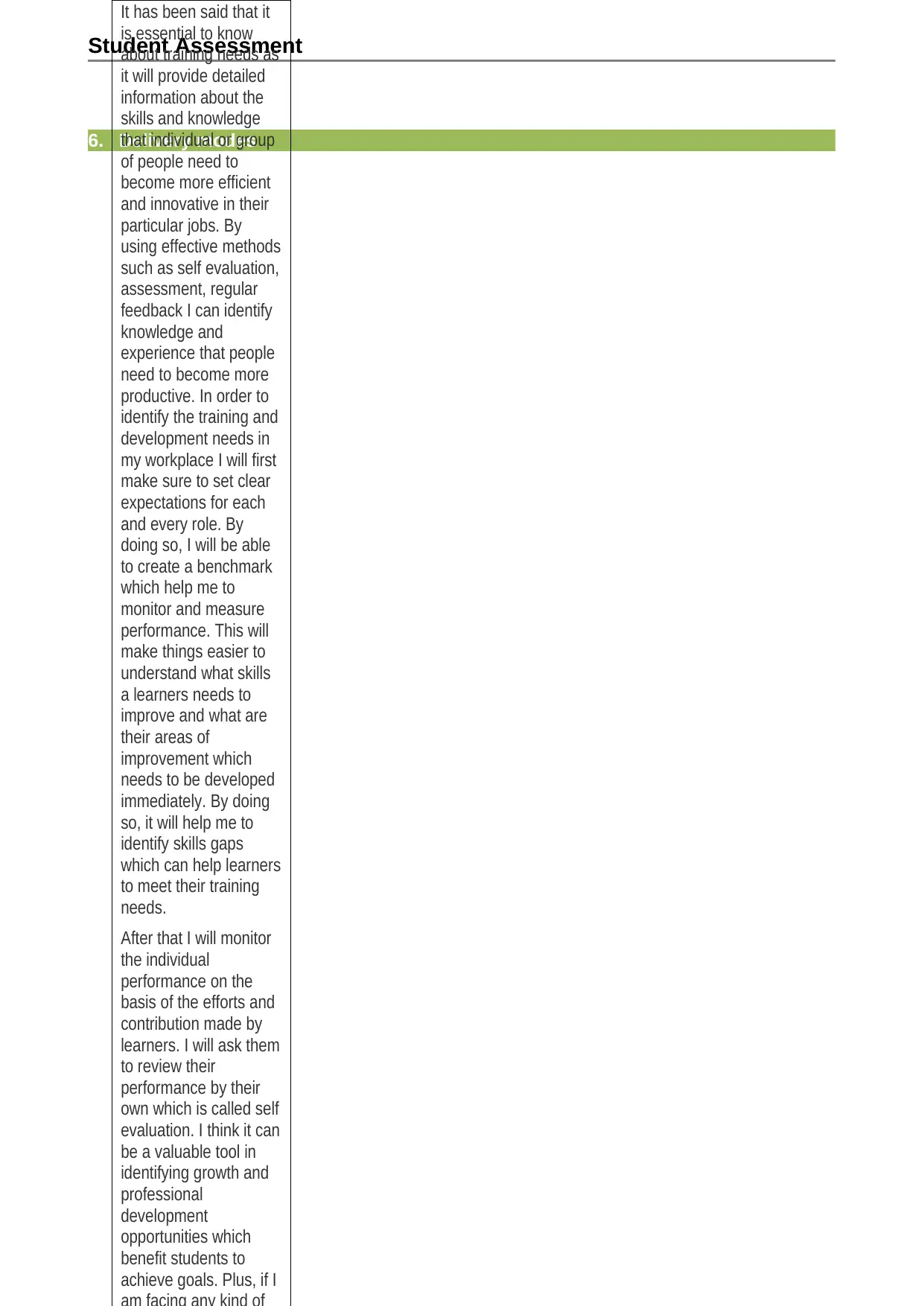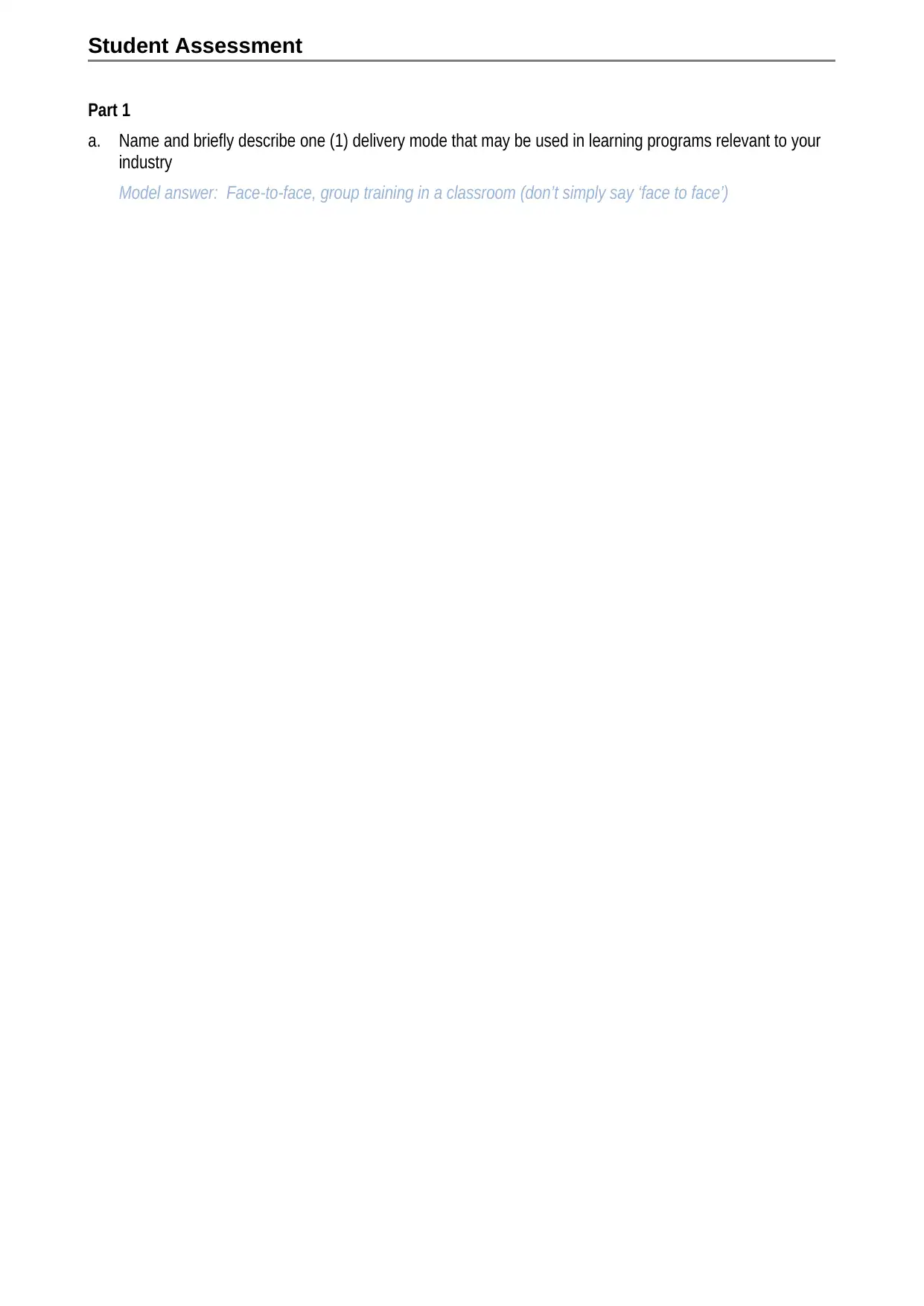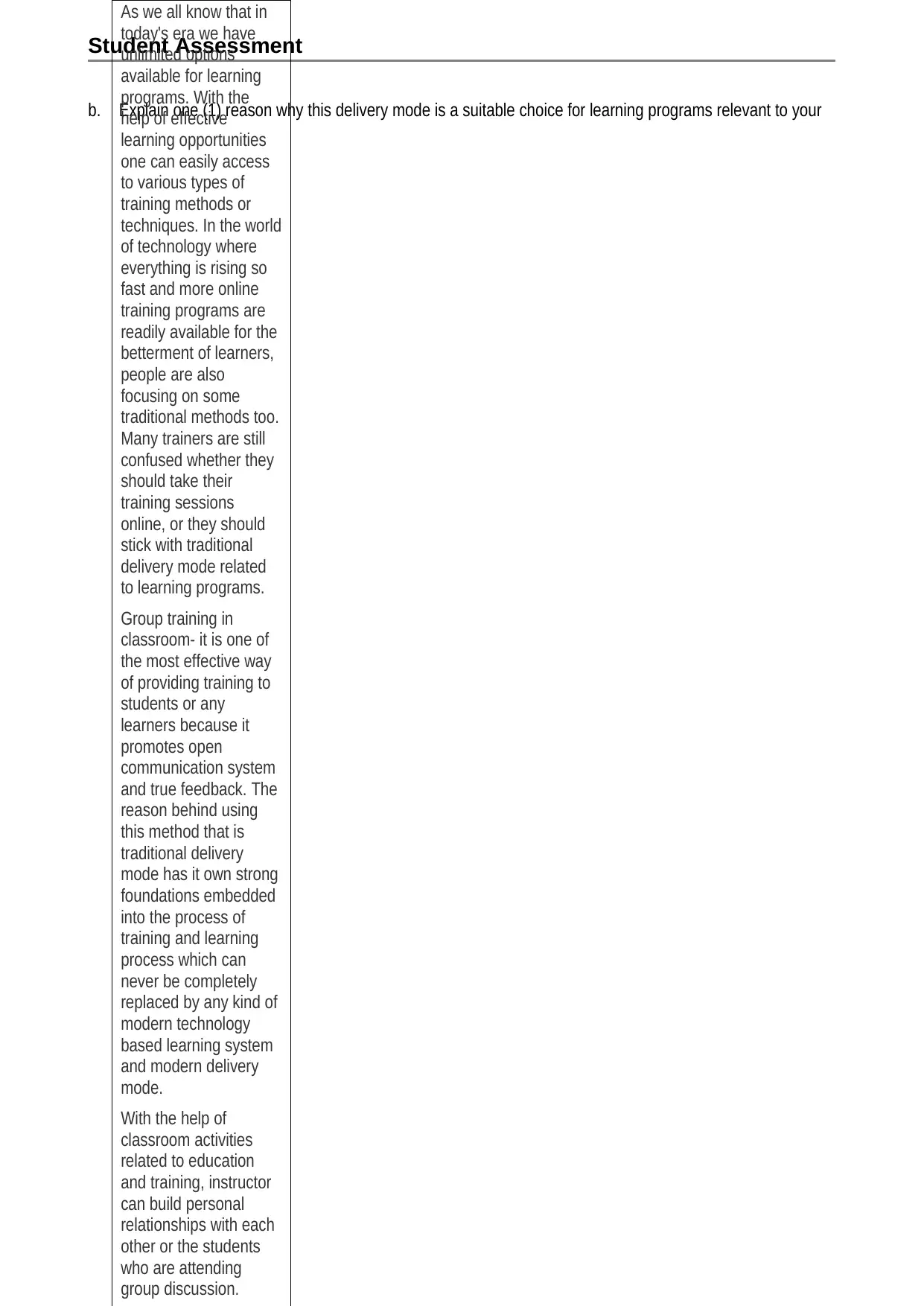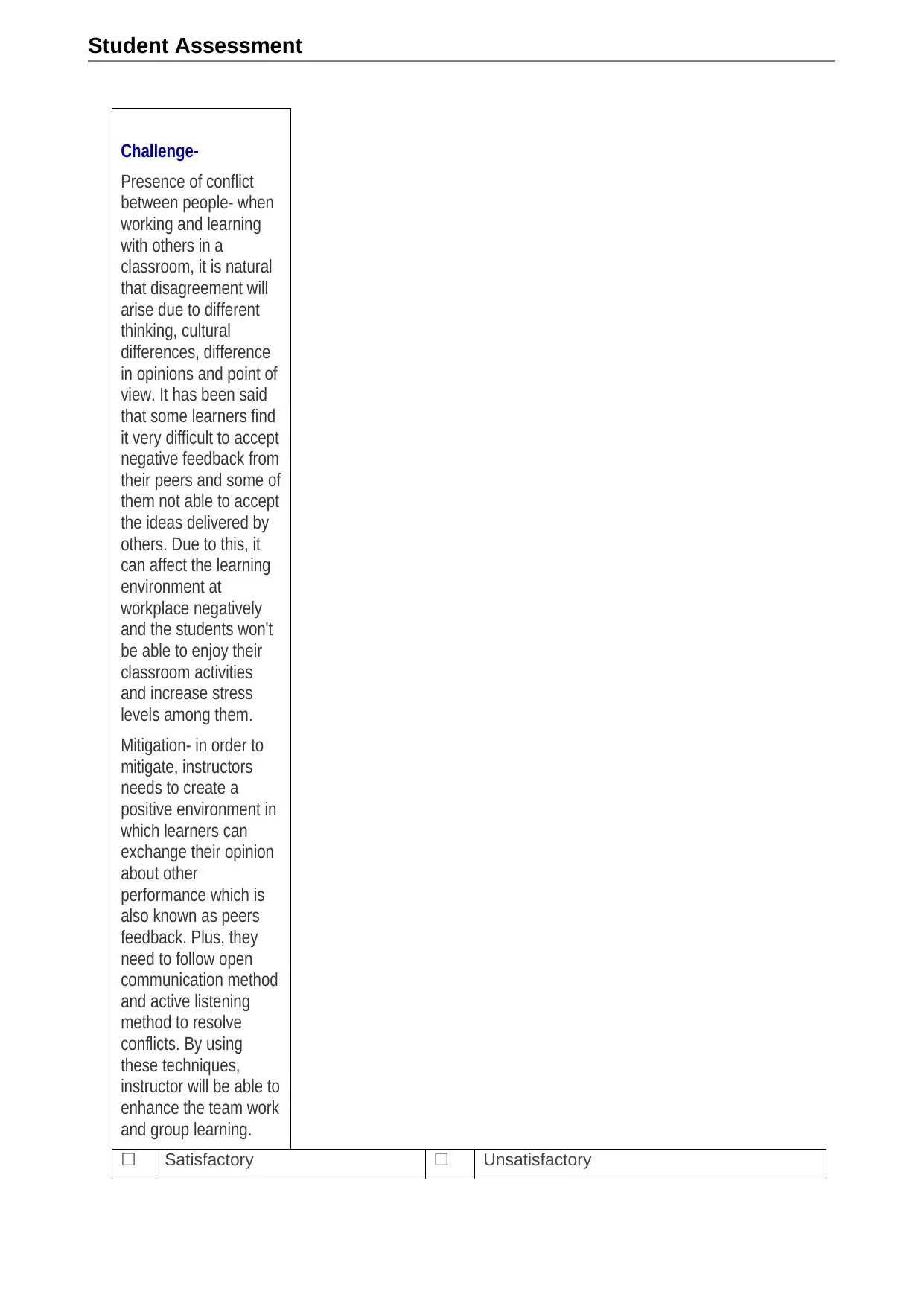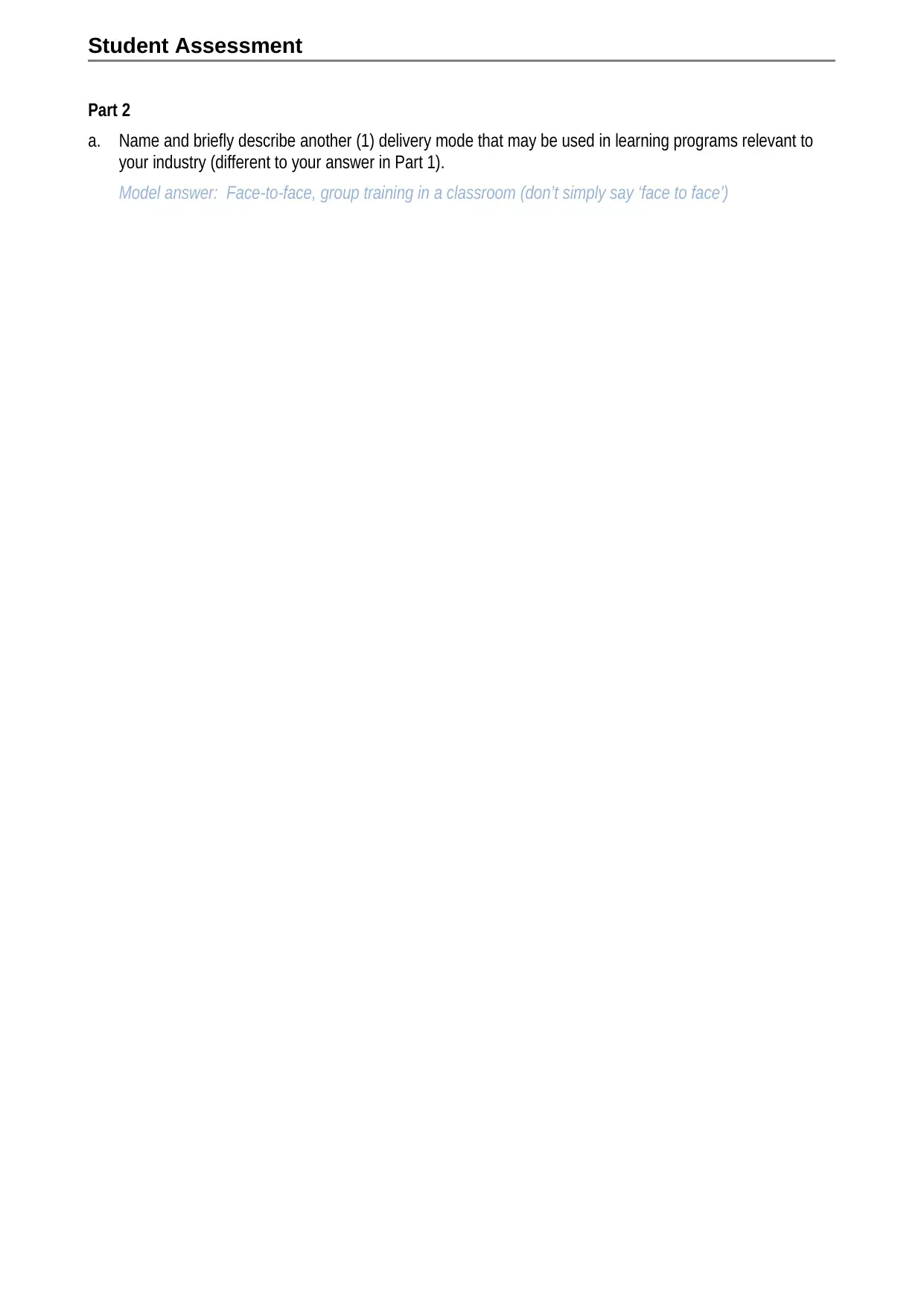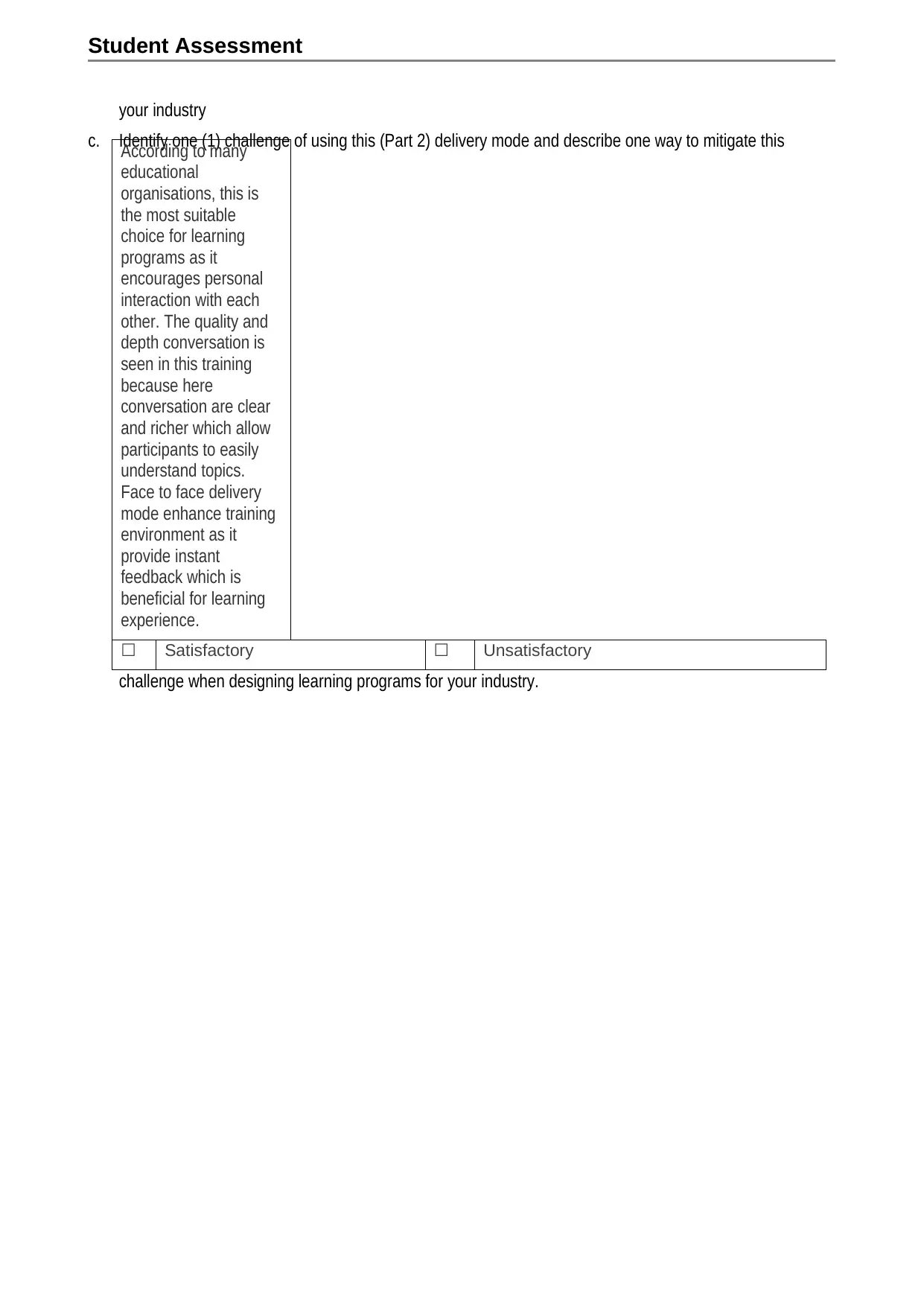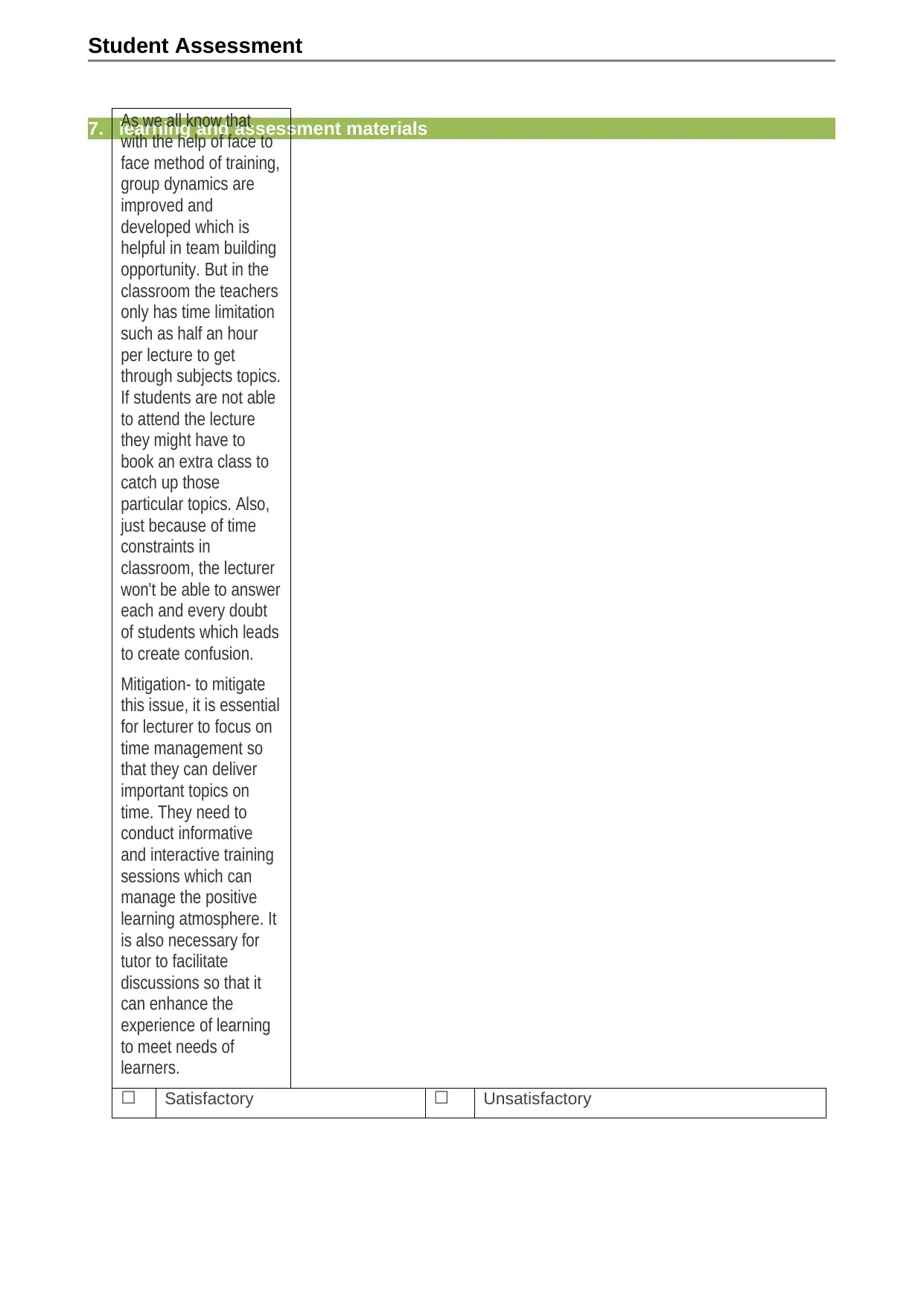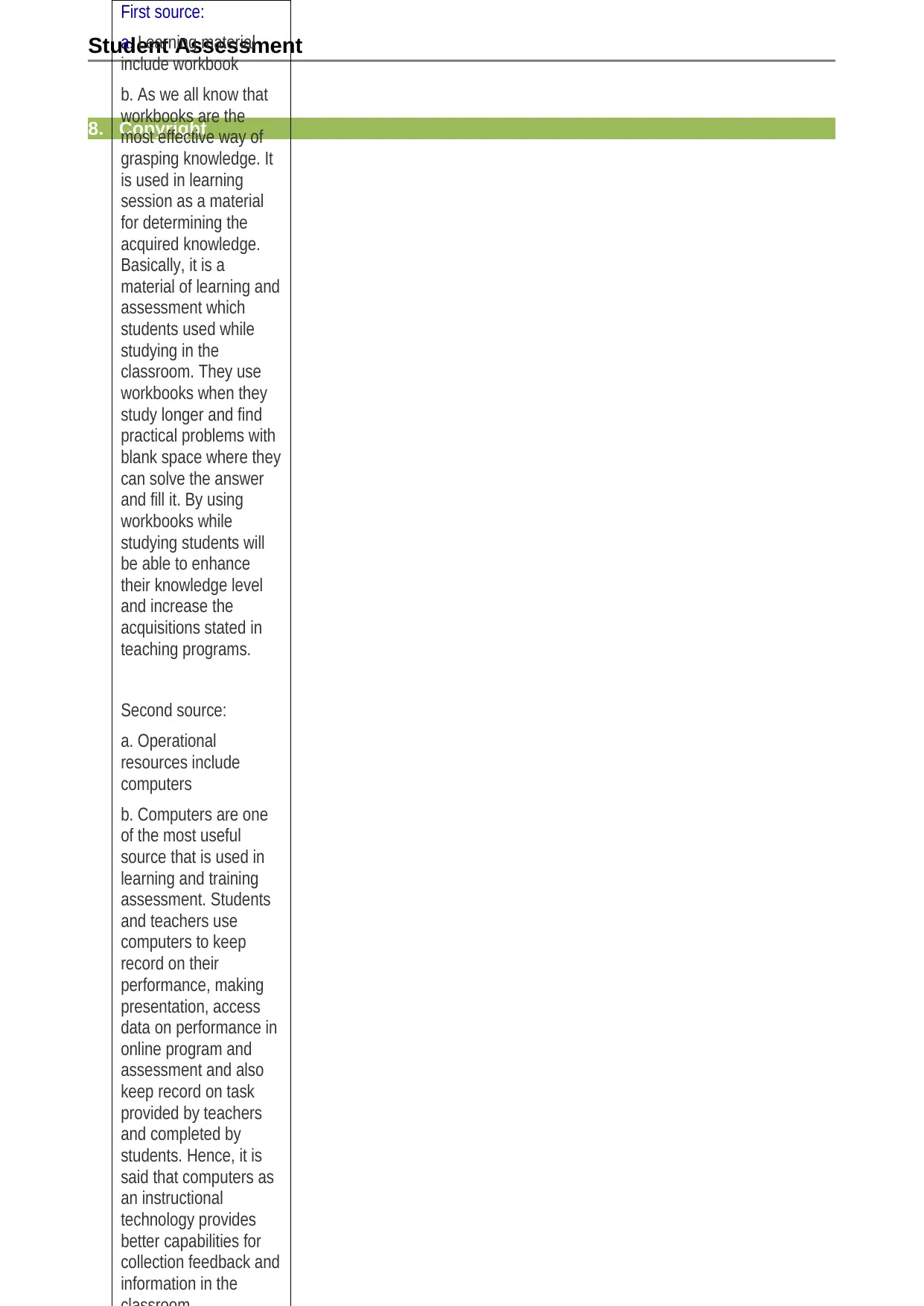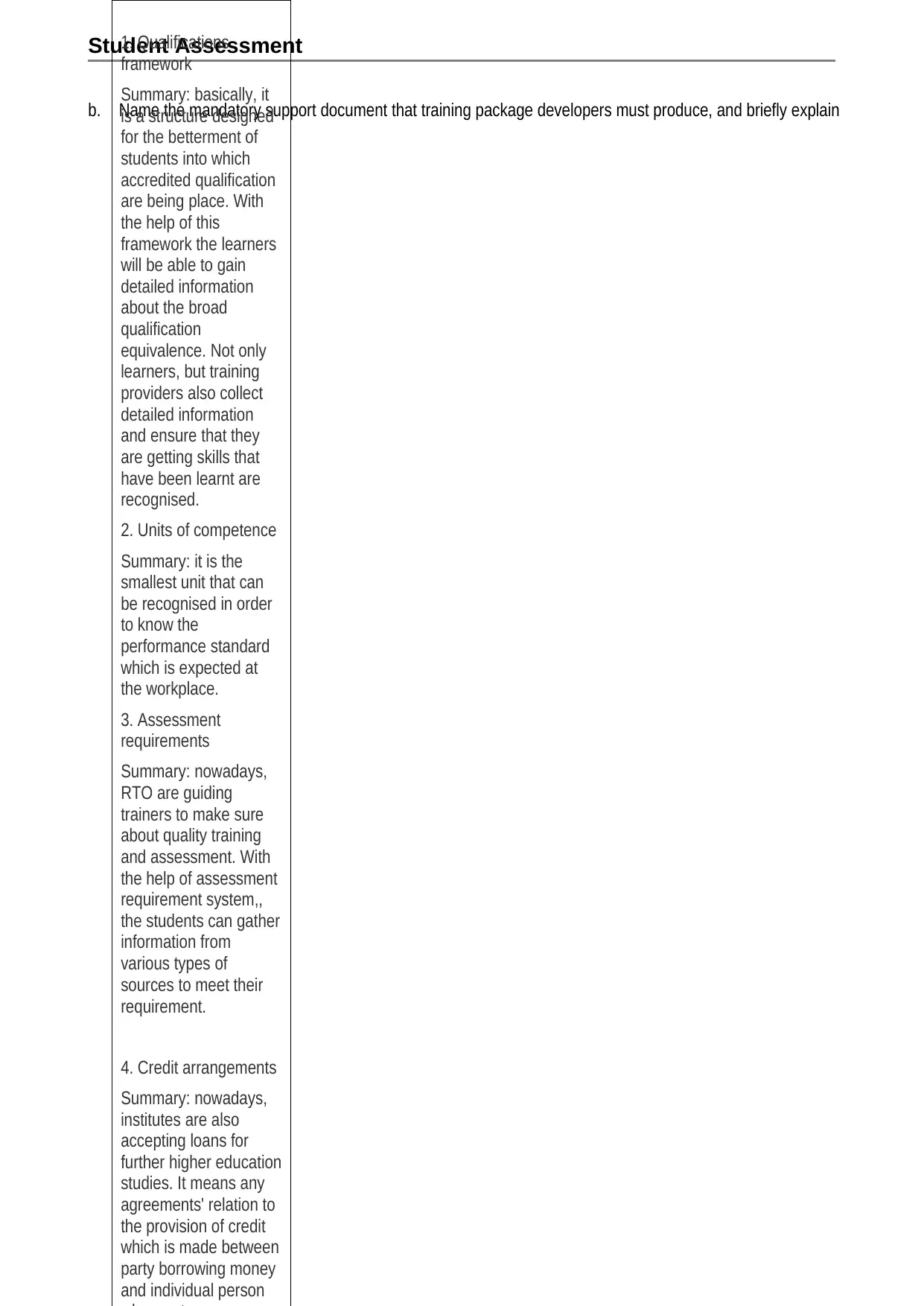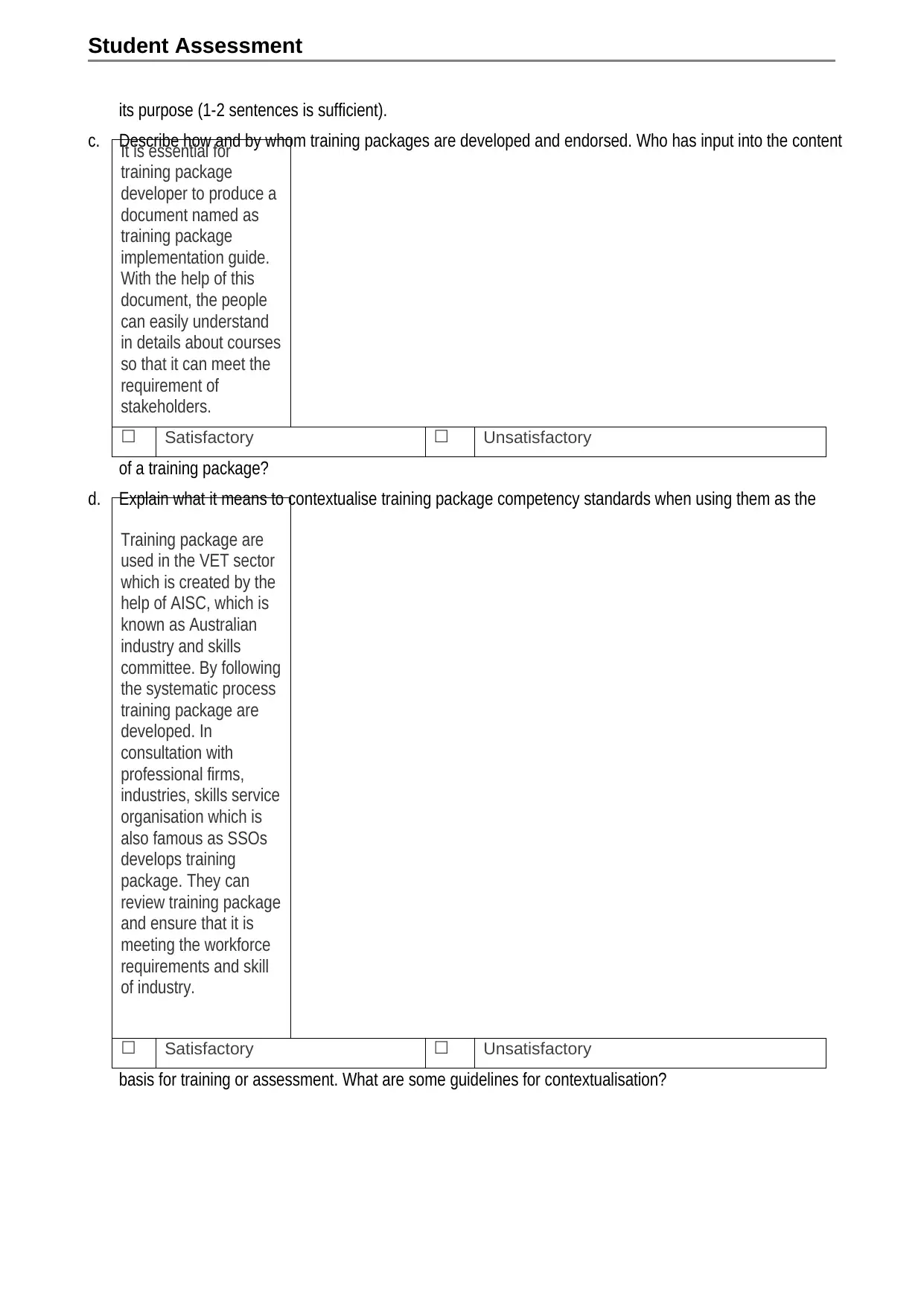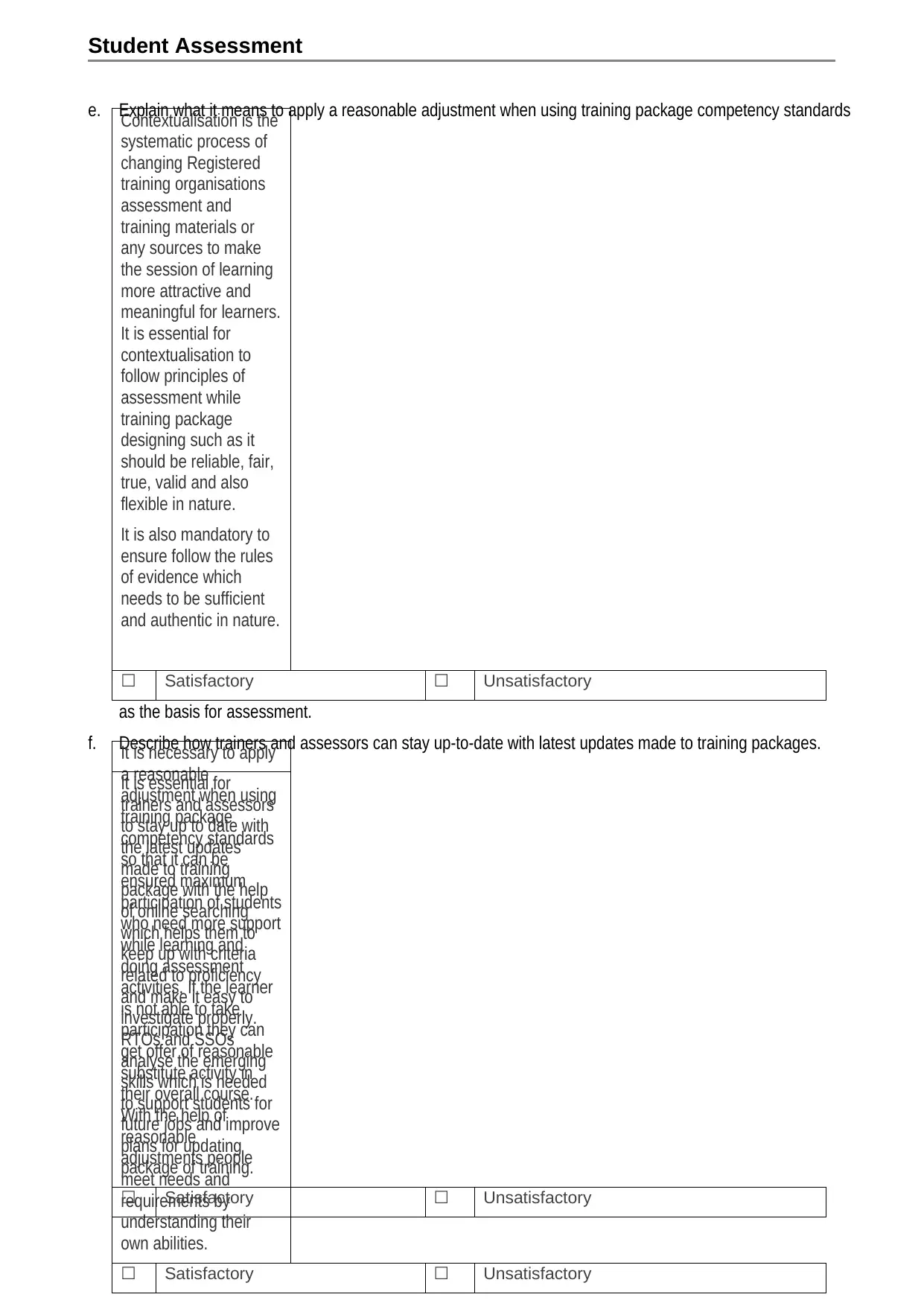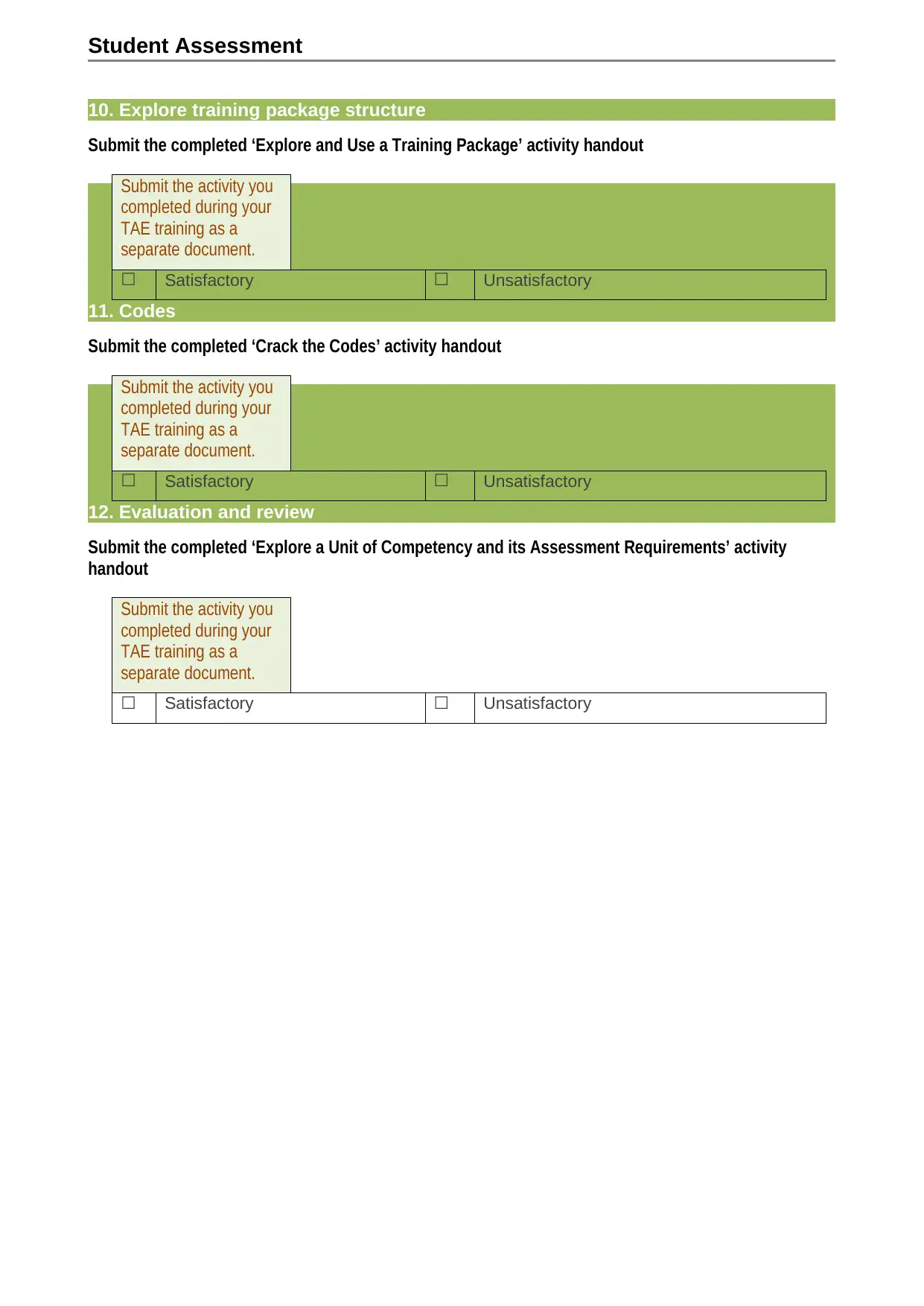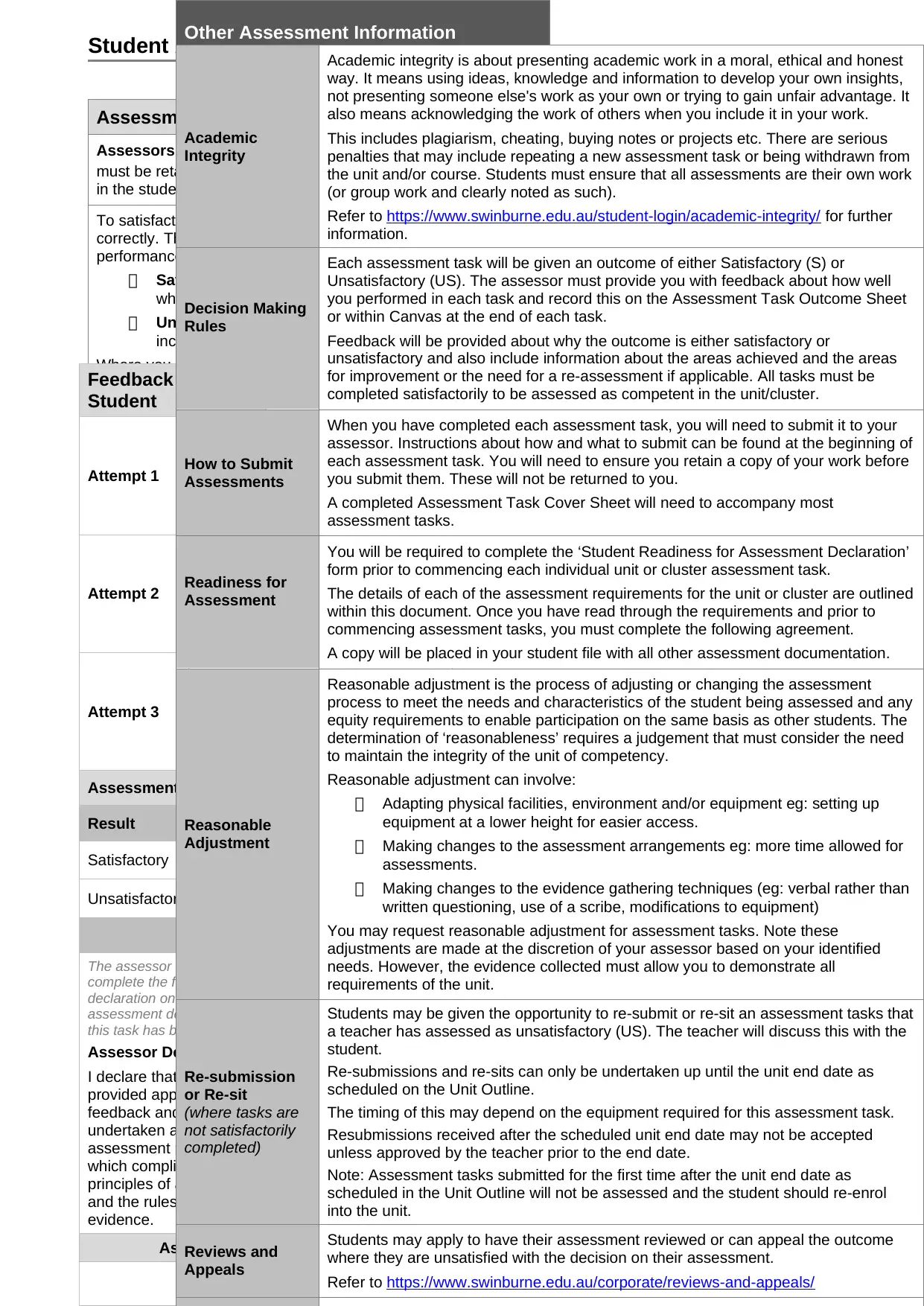Student Assessment - Purpose, Instructions, Conditions, Outcome
VerifiedAI Summary
This assessment is designed to gather evidence of required knowledge to conceptualise, design, develop and review learning programs to meet an identified need for a group of learners. It includes instructions, assessment conditions, terminology used in the questions, assessment outcome, and submission requirements. The assessment is based on the Australian Qualifications Framework (AQF) and Standards for Registered Training Organisations (RTOs) 2015 (SRTOs). The purpose of the assessment is to develop vocational skills and knowledge of the learners. Trainers and assessors should understand the AQF and SRTOs to deliver all the units to support learners so that they can develop vocational skills and knowledge. The assessment is open book and requires typed responses.
![[object Object]](/_next/static/media/star-bottom.7253800d.svg)
![[object Object]](/_next/static/media/star-bottom.7253800d.svg)
